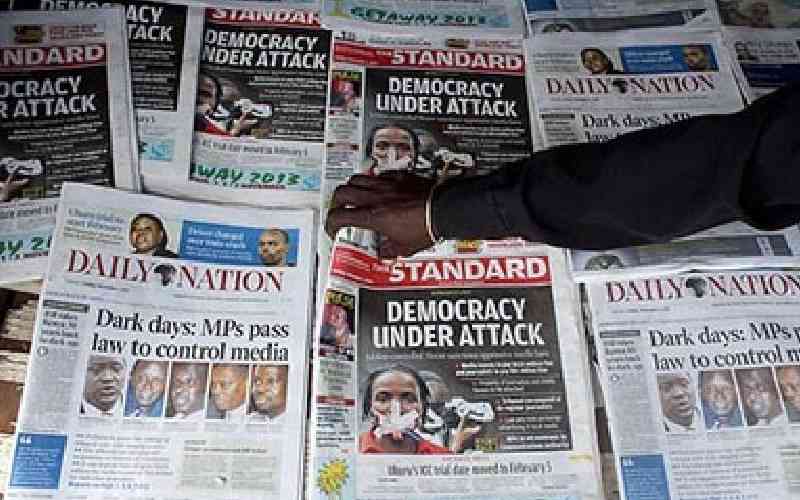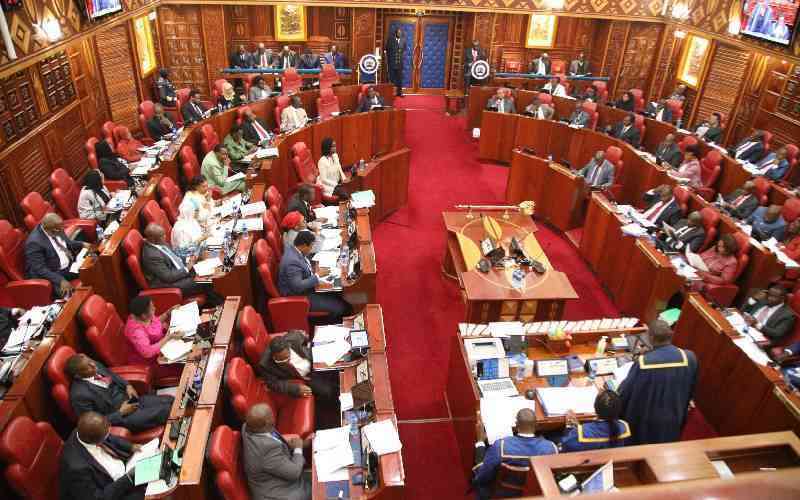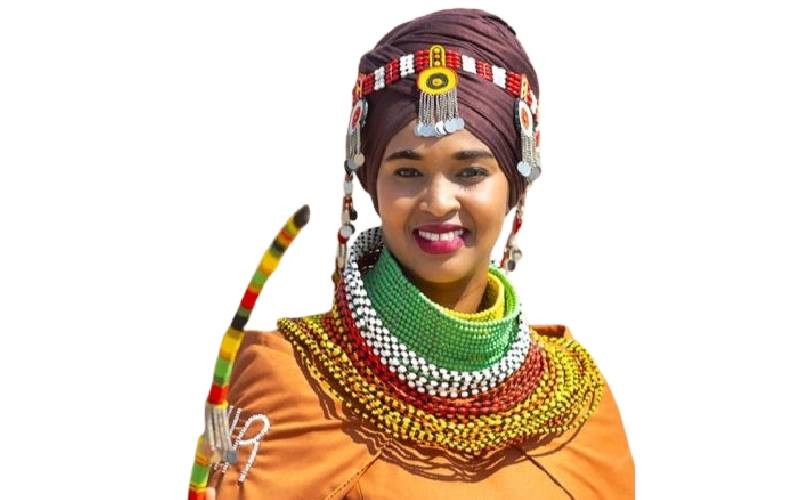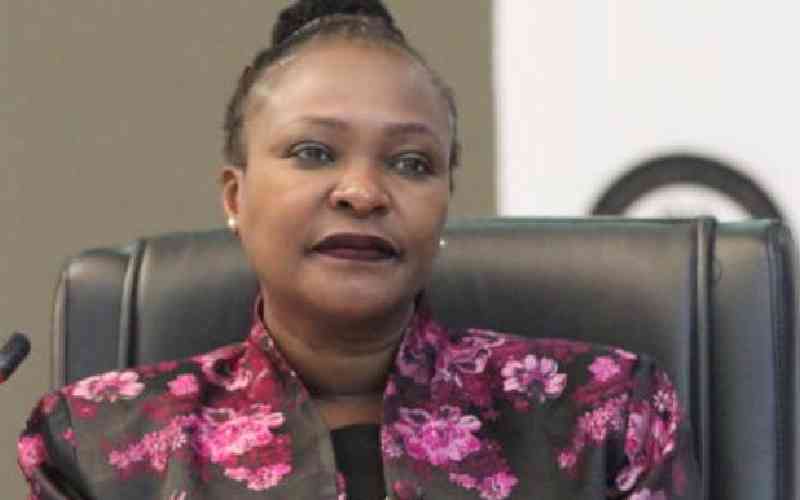
It was America's respected icon of democracy, the third president Thomas Jefferson, he who penned the 1776 Declaration of Independence for the US, who wrote that "our liberty cannot be guarded but by the freedom of the Press, nor that be limited without danger of losing it"
However, many Kenyans, for very strange reasons, have concluded that despite that strong call from one of the fathers of modern democracy the press is not an essential part of our liberty and democracy.
The free and independent media in literally under siege. While other countries are working on innovative viability and sustainability models for their media to get a free, responsible and accountable partner in the democratisation process, in Kenya, we are busy butchering a free press.
There is increased unhealthy competition, which coupled with declining advertising spend, increased harassment of journalists, increased operation costs, sectarian approach to policy issues by media owners and absent political good will, have become an existential threat to the media sector. This, however, is not the end of media in Kenya - the history of the country's media has shown that it is very resilient, and, many times, it has withstood harsher treatment, to remain as one of the most independent press on the continent.
It is true things have changed and new ways of doing business are now required to stabilise the media. There is need to embrace a more nuanced and coordinated industry approach to face current and new challenges if the media is to remain stable.
Majority of media houses in Kenya are private business enterprises. This means that apart from performing their primary roles as media, the enterprises are also keen on attracting revenue and making profit, which is their lifeline though sometimes it compromises their independence.
The government still runs the State Broadcaster, the Kenya Broadcasting Corporation, the Kenya News Agency, the Kenya Film Commission, the Government Advertising Agency and the myGov print publication.
Funding and business management have been among the biggest challenges to the sustainability of pluralistic media in Africa.
Support for the establishment of media outlets has come predominantly from private entrepreneurs or the State, and, in some cases, politicians or their family members owning, buying up or starting up media outlets has not changed significantly in the past six years.
The journey that Kenyan media has travelled
Henry Muoria in his book "The Gikuyu and the white fury" narrates his interesting brush with the law of sedition.
In 1947, Muoria's weekly publication, Mumenyereri, was very popular among the Gikuyu. Muoria received some news from two eyewitnesses who told him that they had been at the Uplands Beacon Factory where they saw two brothers in a crowd being shot dead by armed police. He published the news to the great chagrin of government officials who insisted that it was a false report. He was arraigned for publishing false news.
The law of sedition had many casualties. Dickson Otieno, a schoolteacher was imprisoned for 18 months for possessing the following books; Geography of China, Wages, Prices and Profits in Archaeological Finds in China (Daily Nation, 1 August 1978), because the books were published in foreign languages and publishing in foreign languages was banned - in line with Cold War politics.
In 1980s and 1990s, Kenya's affront to press freedom and freedom of expression using sedition laws, heightened. The harsh application of the laws to bar opposition politicians from selling their ideas to Kenyans had the chilling effect of curtailing press freedom in the country. Actions directed at curtailing political talk ended up shrinking media freedoms, either by design or default.
In 1987, which was proclaimed a year of Discipline, day-to-day editorial control of content and perspective was exerted by the Office of the President, through direct censorship - telephone directives or written instructions backed by threatened or actual arrest and imprisonment of individual journalists. Indirect methods included threatened or actual withdrawal of government advertising.
This period witnessed the banning of the highest number of publications, arrests and sedition charges in the history of the country. In most of the cases, the motive behind charging people with possession of seditious publications appeared to be to punish them for their views or association with opposition politicians. Other arrests were of people who produced, distributed, sold or had in their possession music cassettes of popular songs criticising the government.
Reverend Lawford Imunde and Sheikh Aziz Said Rimo, were sentenced to six years imprisonment in 1990 for possession of a "seditious publication".
Other victims of the system included Charles Rubia, Kenneth Matiba, Raila Odinga, Joe Ager, Christopher Kamuyu, (charged with possessing a prohibited publication, Financial Review) Joe Mwangi Mathai (company recorded and sold political songs), Gerald Chirabika Beti and Elijah Rukose Khasalika (for shouting, "Up with Matiba, and making V signs in Kakamega) and Charles Rukwaro, (sentenced to six months imprisonment for possessing a copy of Financial Review).
The transformation of Kenya's media started with the repeal of the penal code, which provided for sedition during the Inter-Parties Political Group deal in 1997 to the formation of a Task Force on Press Law to inter alia: "make recommendations on Press Law providing for a comprehensive legal framework for the exercise of the freedom of the Press and the development of dynamic and responsible print and electronic media, making provision, inter alia, for free access to information and its dissemination; a code of professional and ethical standards; and ownership, development and licensing of the media," in 1993.
Before then, the use of judicial processes was not spared either and suspect judgments were made against the media while, in some instances, huge defamation penalties awarded in favour of individuals close to power then. For instance, in January 1992, the Attorney General moved to the High Court to stop the editors of Society magazine from publishing, distributing or selling an issue of the magazine whose cover had the portrait of the president holding his chin and the words "The Cost of Killing Ouko" and "Kibaki Wants Moi Out."
The case of broadcasting licences and ensuing wrangles and court battles between Government, NMG, KTN and RMS over the issue of frequencies is a long story. But shortly after, the Government liberalised the airwaves in 1991.
In 1994, the AG obtained leave from the Court of Appeal to institute contempt proceedings against a reporter, editor and publishers of The People for the contempt of scandalising the court. The reporter, David Makali, of The People published a story headlined "Court of Appeal Ruling on Dons' Case Reeked of State Interference" and in which the court ruling was linked to the president's speech.
The post Kanu-era witnessed expansion of investment in media and the growth of broadcasting but government fear and nervousness remained. The fear was crowned by the raid on The Standard in March 2, 2006. Aided by government agents, they burned papers off the printing press then along Likoni road and switched off KTN. A former crime editor at Nation Media Group, Stephen Muiruri, writing in The Standard recently said the raid was sanctioned at the by President Kibaki.
The Jubilee administration had its own measure of insecurity concerning media which showed through President Uhuru Kenyatta's own public utterances and institution policies that have made it hard for media to make economic gain as was before. That begun with the launch of the Government Advertising Agency in 2015, which reduced mainstream media earnings by key margins due to delayed payments. The Jubilee administration implemented what were threats by earlier governments to deny media a key revenue stream.
Media's new challenges
Granted, great strides have been made in the media sector today in Kenya, but we must deal with the prevailing challenges that are threatening the growth of the industry including: political manipulation and editorial influencing, threats against journalists, overbearing regulation, exposure to content theft by digital platforms and administrative actions by public agencies.
Unless the Government and industry work out a system that creates the right environment for doing business, legacy media could soon be a thing of the past- barriers to traditional media are increasing day and day.
For instance, the government's announcement against advertising in private media by public agencies, yet no tangible efforts are being done to engage with technology giants and online platforms to compensate the content they pick from the media. We still maintain regulation limiting advertisements on traditional media of products that are being advertised all through on online platforms.
For example, advertisements on alcohol are banned on traditional media citing protection of children/minors but allowed online yet global trends indicate minors largely consume content from online platforms.
There is no honest dialogue and honest information sharing and engagements between government, regulators, and media owners and managers, many decisions affecting media business are made in the dark and without current data or industry trends.
Mr Bwire is Director of media Training and Development at the Media Council of Kenya
 The Standard Group Plc is a multi-media organization with investments in media platforms spanning newspaper print
operations, television, radio broadcasting, digital and online services. The Standard Group is recognized as a
leading multi-media house in Kenya with a key influence in matters of national and international interest.
The Standard Group Plc is a multi-media organization with investments in media platforms spanning newspaper print
operations, television, radio broadcasting, digital and online services. The Standard Group is recognized as a
leading multi-media house in Kenya with a key influence in matters of national and international interest.











